Reading and Writing and Swimming and Crying
Long clear days and going deep, Tressie McMillan Cottom, Oliver Baez Bendorf, Katherine Rundell, Kate Beaton, Catherine Newman, and Cardamom Apricot Jam Cookies
Hi Folks,
I recently returned to Vancouver from a two-week residency in the Leighton Studios at Banff Centre for the Arts & Creativity.1
“How’s the residency going?” a friend texted to ask me after I’d been in Banff for a few days.
“I’ve just made myself cry from my own writing. So things are going . . . well?” I replied, sending her this teary promotional mug selfie.
“LOL. A true creative!!!” she wrote back.
We’ve been friends for a long time.
I replied, “I know, I’m a bit of a joke. But I actually think it’s good that I’m getting into the material this way.”
I’ve written before about how much of my writing life has been compressed into small pieces before or after or between teaching and parenting, and how I’ve trained myself to drop into these small spaces and trust that the incremental progress of making words can mirror the incremental progress of knitting stitches.2 Even though I was still teaching and attending a few Zoom meetings during the residency, I managed to stack enough things before and after these two weeks to give myself some long clear days. How could I make full use of them? Did those long clear days need structure or intuition?
Fortuitously, I saw
of 's little essay How to Set Yourself Up for Success at a Writing Residency shortly before I left, which gave me a nudge to do the slightly dorky-feeling but clarifying task of writing some intentions for the residency. I wrote intentions around social media use, email access, embodiment, and responses to distraction. Also these:I can trust myself to put in place structure when I need structure and go by feeling or intution when I need that more. I will focus on presence and attention without judgement.
Writing is discovery. Contingency is unavoidable.
So, when I found myself crying over my own writing, that told me something about how deep these long uninterrupted days were letting me go into this writing. Knowing that I didn’t have a meeting down the hall in 45 minutes, confident that a kid wouldn’t open the door and ask for a snack, I could go all the way in.
A few things I noticed that I want to remember for the next time I have the possibility of a few long days:
When I skimmed or scrolled quickly through the writing I was working on, I’d often feel a wave of doubt or even revulsion. Is this worth writing? Is this terrible? But whenever I made myself slow down and work at the level of individual sentences, I felt the generative possibilities of what I was making (and felt less bothered by the ways it’s not yet fully realized). Stay in the sentences.
Using Scrivener’s Revision Mode (which makes all new writing show up in a different color but without the mark-up look of Word track changes) let me see tangible evidence of progress when I was cutting as many words as I was making. Find ways to make progress visible.
Often, I’d eat a big breakfast, grab some snacks for lunch, write straight through, and then go swim laps around five. Swimming after a full day of writing let me stop but still feel the corners of my mind playing with whatever I’d been working on. Several times, I found myself jotting down some structure notes as soon as I got back to my notebook. Water is activating.
Reading (and maybe crying)
I also read a lot of books during the residency! Some of them made me cry too! (When I told my friend I’d spent all Saturday crying over Catherine Newman’s new novel, she said, “Do you think maybe you’re just in a sort of tender place right now?” I mean, YES, clearly, but also, I’m not guaranteeing a tear-free experience here even if you haven’t recently been weeping into your laptop over your own prose.) If you’re looking for something to read, these are well worth your time.
Thick: And Other Essays, Tressie McMillan Cottom
Sharp as hell Black feminist essays on the beauty industry, race disparities in maternal health outcomes, LinkedIn, media ecosystems, and more. Cottom draws equally on personal experience, observation, and sociological data, but the engine is the argument. A few passages from my Commonplace Book:
"Beauty would be a useless concept for capital if it were only a preference in the purest sense. Capital demands that beauty be coersive.”
“All the busywork produced by the technological society perversely creates new ways for technology to make our anxiety a profitable extraction regime. It is a vicious cycle. Such is the foolishness of wanting to be competent in a political economy that can only sell you ways to feel competent, but does not offer sufficient ways to enact competency.”
Advantages of Being Evergreen, Oliver Baez Bendorf
I’m teaching in our optional-residency MFA program this term, which is why I was able to leave for two weeks during the term. While in Banff, I hosted a Zoom session for my “Teaching Creative Writing” course with Oliver Baez Bendorf as part of his Writer in Residence term with UBC. It was a frank wide-ranging conversation (and mini Lynda Barry lovefest) about daring to identify your own priorities and deal-breakers in teaching (and other work). This feels like an essential ethical responsibility for anyone leading a course on creative writing teaching when the job market is so bleak and rife with exploitation.
Anyway, I also took the opportunity to spend some time with Oliver’s poems, and it was such a treat. I was immediately struck by the poem “Field Guide,” which begins “When you arrive, it must be morning” and ends “They must wonder where we are.” The word “must” travels through the whole poem and at some point shifts from insistence to conjecture. But where exactly? Or does it go back and forth? I added this poem to my collection of “poems that do slippery syntactical things with a single phrase,” along with Ada Limón’s The Conditional and Kate Colby’s I Mean.3
I also collected this poem, one of a series of poems spread through the book that work with the alphabet as an organizing principle. I love how this poem both approaches and resists syntax.
Breath I by Oliver Baez Bendorf almost alone animal away become bed behind believe benign billay black bridge burning calls care carlos carry circle clear confess daddy days drink earth egg else empty face fall family float follow fuck full function ghost grows haunted held hold hold hungry knees knows lake leaves life live maybe mercy mine monster moon mother nice nothing past paternal pine practice prayer pull queer quiet rain salt shaking shape shiny sin singing sits sky sleep small soft sometimes sound stop things took toward tree turned voice wake wanted watch whole wild wilderness winter wishes witch wooden woods write wrong
Super-Infinite: The Transformations of John Donne, Katherine Rundell
If you like John Donne (or think you might like John Donne if you just had a bit more context to grok the references and period language), this is a book for you.4 Erudite, wry, and super-readable. Here are a few passages I’ve flagged to share with my big “Introduction to Writing Poetry” course next time I teach it:
“Human experience exceeds our capacity to either explain or express it: Donne knew it, and so he invented new words and new forms to try.”
“But there are elements of each of us so particular, unwieldy, so without cliché, that it is necessary for each poet to invent his own language. It is necessary for us all to do so; owning one’s own language is not an optional extra.”
Ducks: Two Years in the Oil Sands, Kate Beaton
As a Canadian (dual citizen, technically) who mostly grew up in the US, I often feel like I’m playing catch-up with references and touchstones of Canadian literature, culture, even geography. Beaton’s new graphic memoir helped locate me in some particularly Canadian complexities: the lack of jobs in Maritime Provinces, how many people are driven to the boom towns and camps of extractive oil industries in Alberta, and the cost of all of this both to people and land. I was especially struck by how Beaton depicts camps where men outnumber women fifty-to-one, and by her painful questions as she finds herself objectified and abused by men who look and talk just like her cousins and friends back home. Are these men dehumanized by the isolation and alienation of camp life? Is the capacity to objectify there all along, just waiting to be socially sanctioned? Images and moments from this book keep rising up in my mind, and I know they’ll persist for a long time.
We All Want Impossible Things, Catherine Newman
Ok, this one was the real tear-jerker. But in the best way. I read the whole book on a Saturday in the middle of the residency sitting looking out at the snow light and sniffling. It’s a story about a woman in her 40s whose best friend is dying of cancer. But it’s also hilarious and tender and messy. It takes friendship as seriously as it deserves. Friendships are great loves of our lives! Not secondary to anything! And it has teenage characters who are full, complex, responsible people who support their parents and call out their bullshit. I loved that! Here are a few passages I couldn’t resist reading over the phone to a friend.
“I love you too,” I write, and I squeeze my eyes shut to picture her face, paint hearts on her cheeks, sprinkle her with glitter.
“I think I might not know the difference between praying and decorating a cupcake,” I say to Honey.”
“My mom, an avid gardener, had suggested everlasting as a nice filler for the bouquet, and the florist said, “Well, I’ve got pearly everlasting, early everlasting, and clammy everlasting. Which do you want?” I’d said something about clammy everlasting not feeling like a great omen for a marriage, and he hadn’t laughed. “I guess pearly?”
My Cardamom Phase
While it was an utter luxury to have all of my meals provided for me, I have to admit that I’ve also been happy to be back in my own kitchen.
I’m currently in a cardamom phase. I bought some nice freshly ground cardamom, and I’m on the lookout for opportunities to use it. If I see a recipe for cinnamon rolls, I’m subbing in at least half cardamom. So, that’s how I landed on this variation of
's checkerboard sable, which I’ve been riffing on for a while.Cardamom Apricot Jam Cookies
Ingredients
250 grams (2 cups) flour
3 grams (1/2 tsp) salt
65 grams (1/3 cup) granulated sugar
40 grams (1/3 cup) powdered sugar
8 oz (1 cup / 2 sticks) unsalted butter, cut into pieces
1 large egg yolk
1 tsp. vanilla
1/4 tsp to 1 and 1/2 tsp (or even more) cardamom, depending on how potent your cardamom is (and how much you like it)
Instructions
Preheat oven to 350 F.
In a food processor (a stand mixer or hand-mixer would also probably work with a bit more time), combine sugars, salt, and flour. Pulse to combine.
Add the butter and pulse until it disappears, then keep the machine running until it just starts to clump.
Add the egg yolk, the vanilla, and the cardamom and combine until a smooth mass forms. You may want to start light with the cardamom, taste, and add more.
Place dough between two sheets of parchment and roll it out until it’s about 1/4 inch thick. Put the rolled-out dough in the freezer for 10-15 minutes to solidify for nice clear cookie edges.
Cut into rounds with a cookie cutter. You could also use a glass or cut them into squares with a knife.
Press with your thumb to make a slight indent in the center and fill with a small spoon of jam. My current favorite is D’Arbo Apricot, which has a lovely soft texture and complex flavor.
Bake for 10-12 minutes, or until cookies are just starting to brown along the edges/bottom.
[If you want to make some multi-colored moon cookies like the ones below, you could leave the cardamom out until the end, take some of the dough out, and then individually flavor sections of dough with any combination of ground instant coffee, cocoa powder, matcha powder, ground freeze-dried fruit, or other spices. Just roll out chunks/scraps together.]
Yours,
Bronwen
PS: If you liked this post, please hit the heart to let me know! If you cook something or read something or try out a writing thing I share, I’d love to hear about it. You can also support this newsletter by subscribing, sharing, or commenting.
And promptly caught a puking bug from my daughter. Rude.
I knit 17 sweaters for friends while reading for my Ph.D. dissertation.
I’m constantly gathering peculiar collections for teaching purposes (and just because I like noticing connections and I can’t resist).
Shout-out to students of my Spring 2019 course “How Poems Get Made.” You’re welcome for the chance (requirement) to read John Donne!




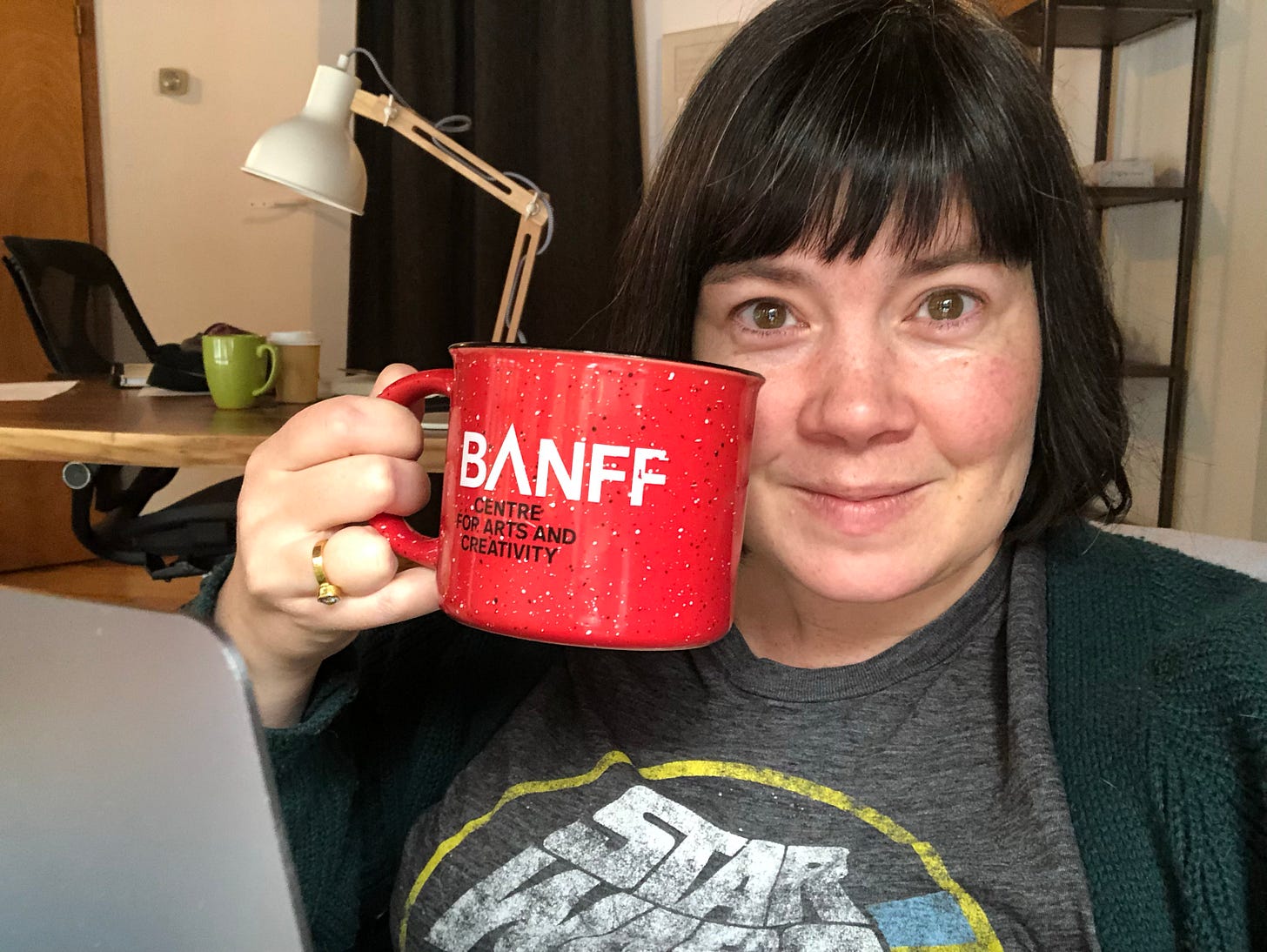
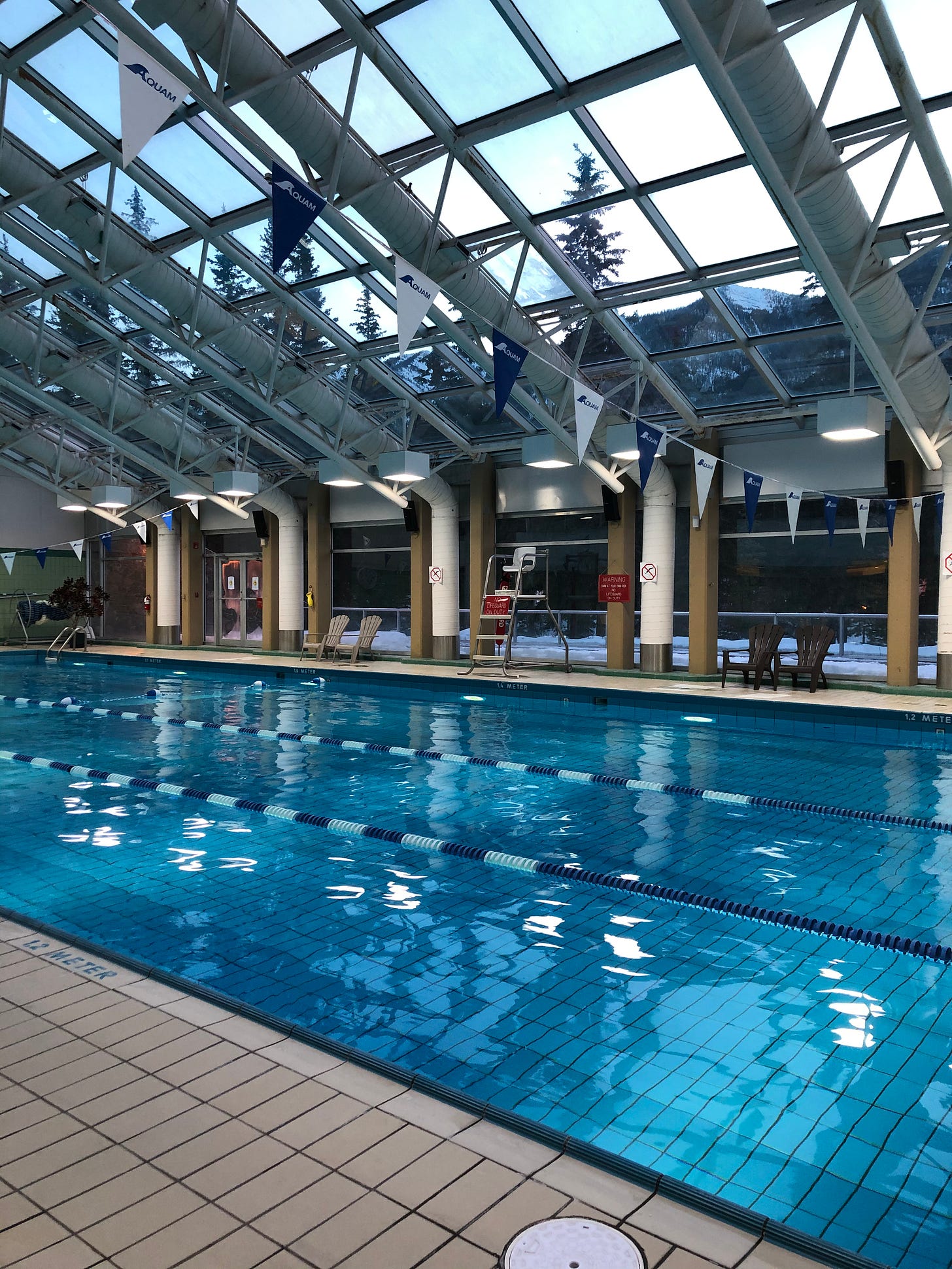

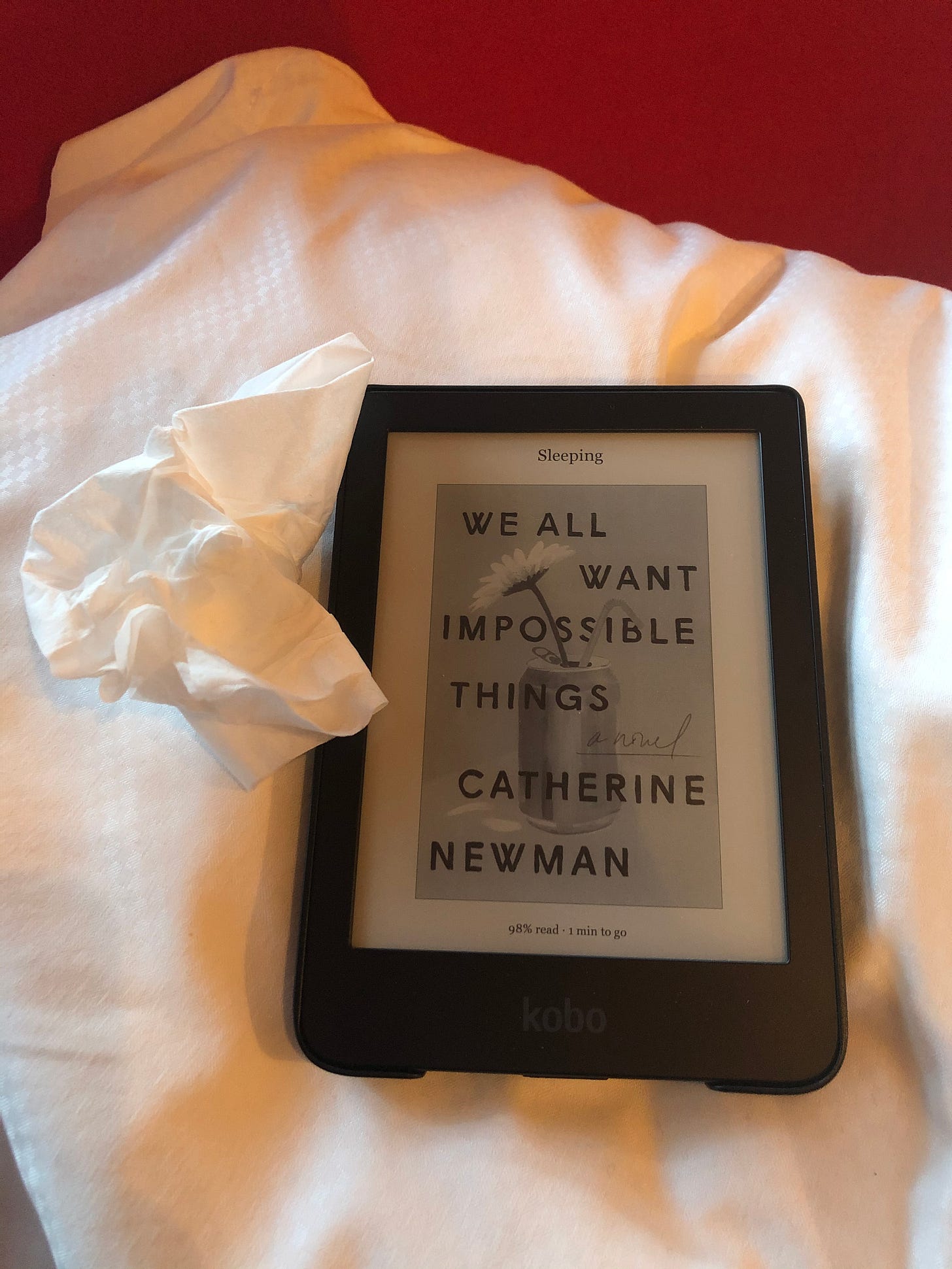
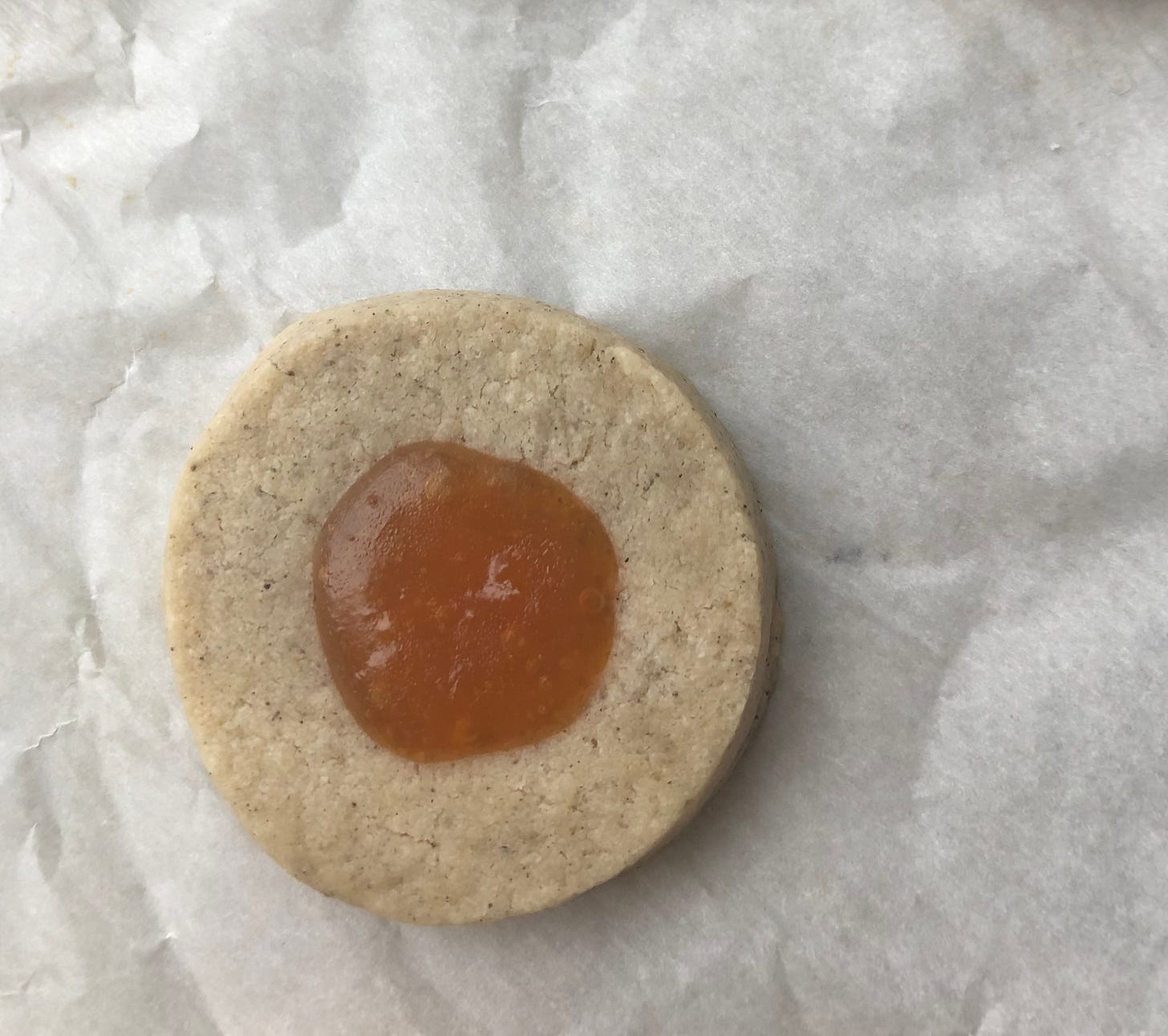
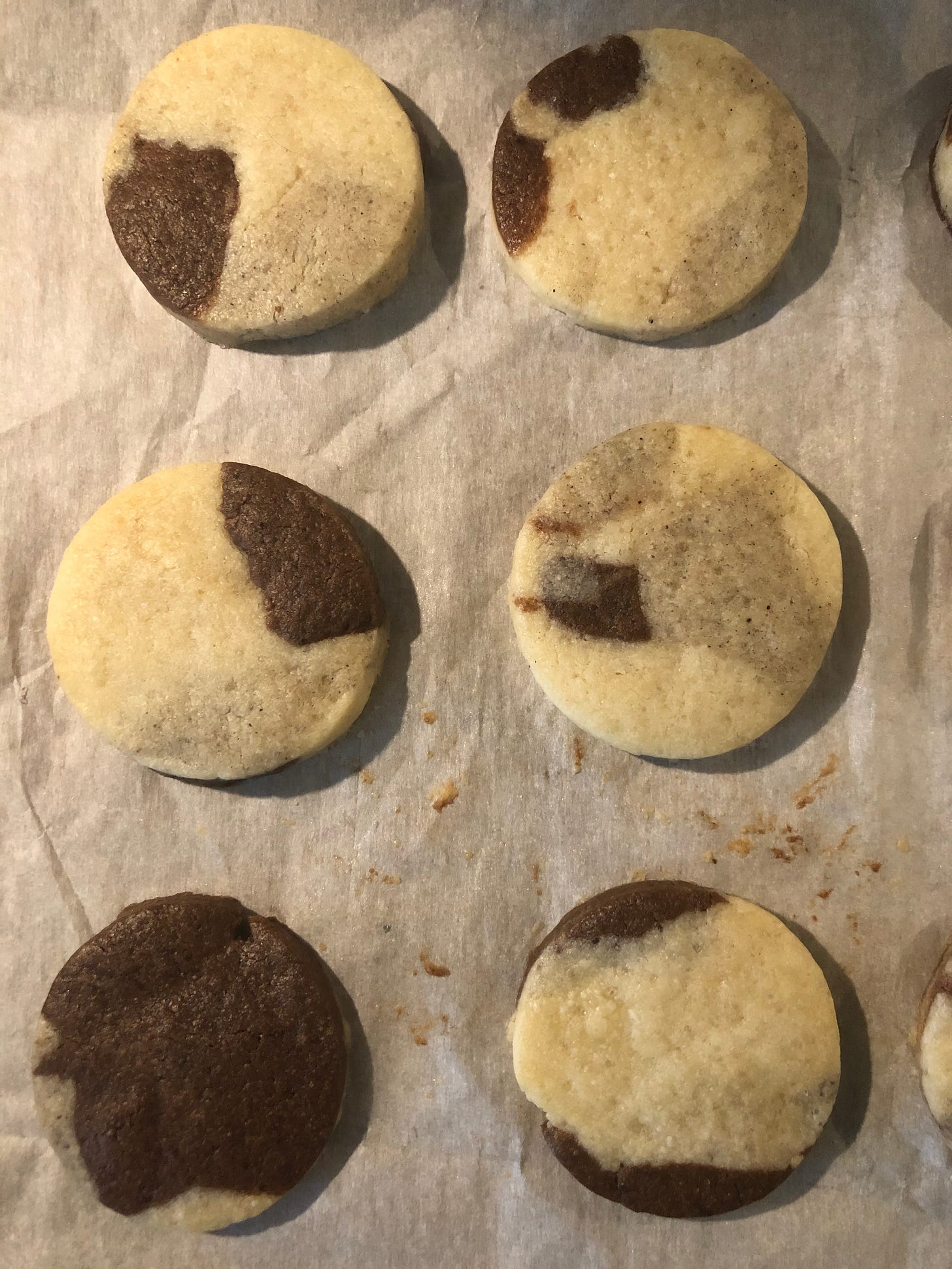
Thanks for this! I wrote down your writing tips to tape to my desk :) I also have a new list of books to read!
Swimming in a glass covered pool while it snows sounds utterly magical ❄️ ✨